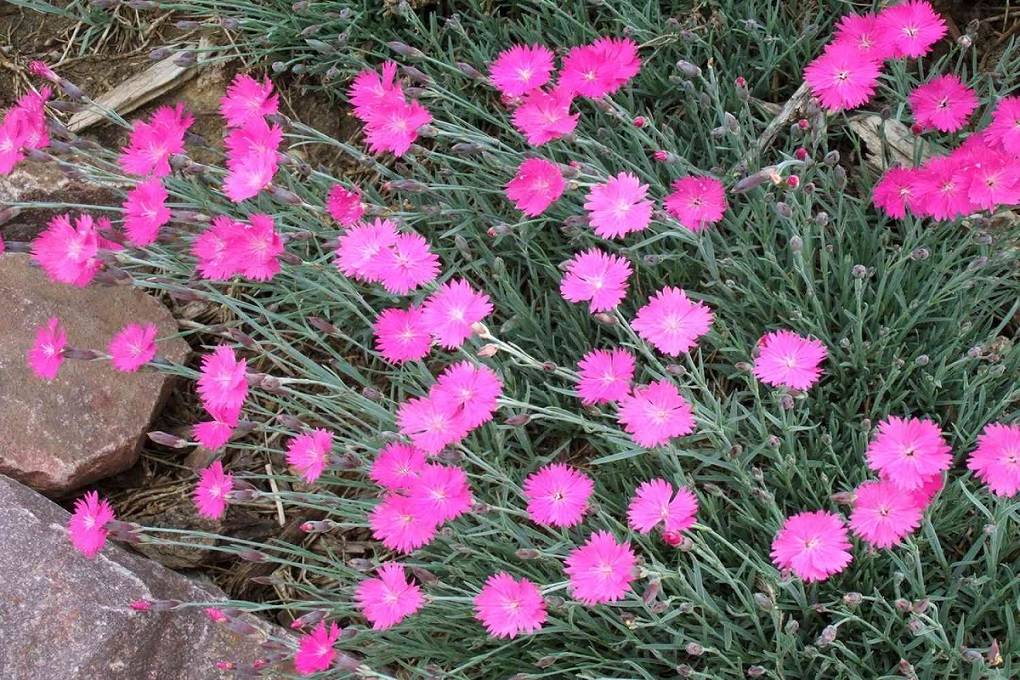
Dianthus is a popular variety of flowering plant that is native to Europe and Asia. Dianthus produces beautiful flowers in nearly every colour conceivable plus it also attracts butterflies, hummingbirds, along with other pollinating insects.
Dianthus is a type of flowering plant that belongs to the family Caryophyllaceae. There are hundreds of different varieties of this plant and most of them are native to Europe, Asia, and North Africa. While many of the varieties of this plant are perennial, there are some that bloom either annually or biannually.
Usually, this plant blooms from spring to early summer. However, there are some varieties that bloom intermittently throughout the year. The flowers of this plant bloom in almost every colour imaginable and they also emit a spicy fragrance. Because of their versatility and beauty, most amateur gardeners plant dianthus indoors for display or around the borders of their gardens.
Soil Preparation and Sowing
Dianthus grows best in well-draining soil. To improve the drainage of heavy soil by mixing organic compost prior to sowing seeds. The best time to plant dianthus seeds is in early spring. Dianthus seeds can be sowed directly into the ground. When sowing seeds, cover lightly with soil and space the seeds for good air circulation.
When sowing the seeds indoors, use a pot that aids air circulation and after sowing the seeds, cover them with soil, and keep the soil moist. In order to facilitate germination, place the pot next to a sun-facing window.
Sunlight Exposure
Dianthus plant enjoys being in the sun. Therefore, if you are planning to grow your plant indoors, choose a place that will receive at least 6 hours of sun. And if you plant it outdoors, choose a place that also receives at least 6 hours of sunlight either directly or indirectly.
Irrigation
Water the dianthus plant whenever the soil feels dry. Dianthus is prone to developing fungals infection caused by overwatering. Therefore, make sure that you keep the soil moist and not drenched with water.
Fertilizers
During the blooming season, nourish the soil with any common variety of garden fertilizer or a balanced fertilizer that has equal amounts of potassium, nitrogen, and phosphorus.
Pesticides and Disease Management
Dianthus is prone to several pest infestations and diseases. Dianthus attracts pests such as aphids, grasshoppers, slugs, and snails, and sow bugs. Insecticidal soaps and oils are used to manage insect pest infestations. Mix plant-based insecticidal oil or soaps with water and spray your plant evenly if you suspect an infestation. In the early days of infestation, pests can also be rinsed off the plant with a strong hose.
Root and stem rot disease is extremely common in the dianthus plant. Overwatering your plant or using non-well-draining soil causes a fungal infection which leads to the rotting of stems and roots. To treat your plant, remove it from its original pot and remove the soil attached to its roots. Use sterilized scissors and start trimming rotting roots. Also, prune damaged foliage. Repot the plant in either a new pot or after washing the pot with bleached water and this time use well-draining soil.
The dianthus plant is also prone to Botrytis blight, a fungal infection caused in many plants by Botrytis cinerea. This disease can be prevented by maintaining low levels of humidity and condensation. You can also spray your plant with copper-soap fungicide every 10 days starting from the flowering stage and until harvest.
To treat this infection, start off by pruning the damaged areas of the plant and improving the air circulation. Then clean the soil and rake all fallen debris. Add organic compost or mulch to your plant and only water it in the early morning hours.
Pruning
In order to promote healthy foliage and flower growth, remove faded flowers, leaves, and stems. Also, shear the plant after the flowering season ends to encourage a second bloom later in the season.
















